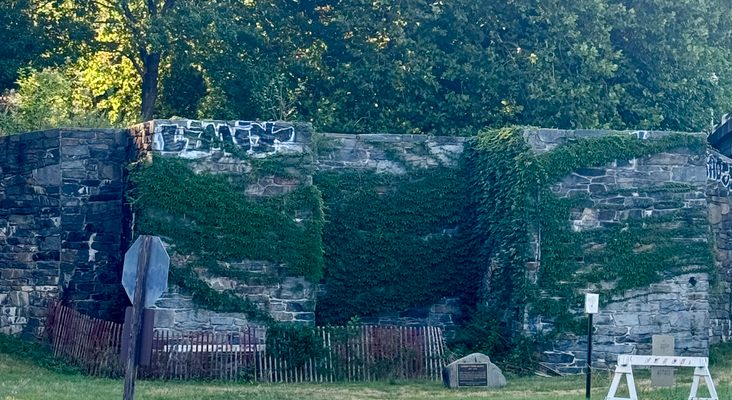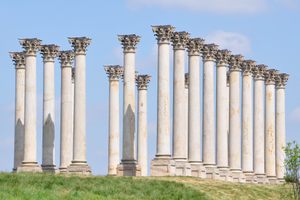About
Driving along Rock Creek Parkway, near Georgetown in Washington, D.C., you may glance out your car window and notice this odd masonry structure with a small plaque in front. Located right off the highway onramp, these are the remains of the old Godey Lime Kilns.
Constructed in 1864 by William H. Godey for $2,500, the kilns were used to break down limestone into lime and plaster that were needed at construction sites across the city. Washington historian John Lockwood explains how the Godey Lime Kiln Company "used limestone from quarries near Seneca and brought it to the kilns via the C&O Canal. The limestone then was fed into the top of each kiln's chimney at night."
The kilns closed for good in 1908, after sprawling railroad networks and industrialization made it more economically viable to process limestone in large factories and ship it out on trains, rather than having many kilns local to communities. The invention of Portland Cement was the death knell for the once-booming lime trade.
The lime kilns fell into disrepair over the next several decades. They were partially restored, for historical preservation, in 1967. In 1973 the kilns were added to the National Register of Historic Places. Although there were originally four kilns at the site, two were torn down to make room for the Whitehurst Freeway. The ground was also raised during this construction, covering up the bottoms of the two remaining kilns. Today they live on as perhaps the most pedestrian-inaccessible historical attraction in Washington, D.C.
Related Tags
Know Before You Go
You can see the kilns briefly as you drive past on Rock Creek Parkway, but if you want to get closer to them the easiest access is off L st NW where it intersects with 26th st. L st dead ends directly behind the kilns.
Community Contributors
Added By
Published
January 13, 2017
























































